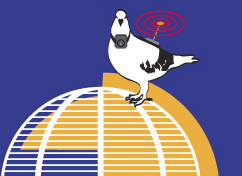Jon Ippolito
Visitor
|
Art, design, and entertainment - 2006/05/21 01:59
Steve,
Thanks for bringing these neglected works to the table; it's always helpful to broaden the discussion beyond the usual suspects. I confess that I don't know any of these "digital auteurs," so any links to their works online would be helpful.
In At the Edge of Art, Joline Blais and I argue against the misinterpretation of Duchamp that says these works only qualify as art if they have been seen in Chelsea or Documenta. To us, appearing in an "art context" is less important for art of the 21st century than fulfilling an artistic function, wherever it may be found.
Nevertheless, the genres you describe--music videos, commercial shorts, motion-graphics--more commonly fulfill functions associated with design or entertainment. Do you agree with this characterization for the works you describe? If so, do you see any danger that these other functions may eclipse their role as artworks?
Cheers,
jon
|
|
|
| | The topic has been locked. |
Steve Anderson
Visitor
|
Re:Art, design, and entertainment - 2006/05/21 11:01
Thanks for your thoughtful response, Jon. I will post some links. In the mean time, my hope is precisely to work against the old art/commerce divide, which is to say that I'm not bothered at all by the commercial motivations of some of this work. This approach is consistent with David James' revisioning of the history of avant-garde film (I don't know who is responsible for the mis-spelling in the title of my paper!) in terms of an entangled, rather than an oppositional, relationship.
People tend to have negative reactions to my use of the term "avant-garde," because it has been so effectively claimed by the narratives of modernism. But I'm not convinced that there is no place in digital culture -- or postmodernism more generally for that matter -- for the concept of an avant-garde. Part of the point of this paper is to express a hopeful gesture, motivated by the remarkable formal innovations of work that is emerging from the design and music video industries.
|
|
|
| | The topic has been locked. |
Wendy Chun
Visitor

Moderator
| Posts: 2 |   |
Karma: 0
|
Re:Art, design, and entertainment - 2006/05/23 06:32
hi all,
the question of the relationship between art, design and entertainment is an important one--and one around which i think you all may differ (perhaps we can address this issue at ISEA? although i'm sure ISEA as a whole will address it).
as i'm sure you all are aware, the term "avant-garde" is a military one--it means the foremost part of an army. i wonder if we should also be interrogating the "trans" in terms of the military, especially since the military does seem in many ways to be an "avant-garde" when it comes to digital media development. it seems a gap in our discussions. or perhaps it will lead us too far afield?
best,
whkc.
|
|
|
| | The topic has been locked. |
Jon Ippolito
Visitor
|
Re:Art, design, and entertainment - 2006/05/25 13:41
Well, isn't that the point of an avant-garde--to lead us far afield? I think there is general interest in all three of our papers to look beyond the traditional confines of disciplines like art.
That said, I suspect that Steve and Ned are more sanguine than Joline and I about entanglement in systems like commerce. While we argue that today's art should and can be found in nontraditional settings--even commercial and military ones--that's not the same as saying they are primarily commercial or military applications. Art is a fragile thing; its functions are easily co-opted or eclipsed by other imperatives.
Critics wax philosophical about the way Peter Halley’s brightly colored compositions mirror prison architecture, silicon-chip design, and suburban tract-home planning; it’s possible that some collectors of his work even slog through the two-hundred-page book of his collected essays so they can spout the same deconstructionist vocabulary when describing the work to their friends. You can bet, however, that their friends just see the pleasing geometric abstraction hanging above the couch as a decorous financial investment. Likewise, the artist collective Big Room creates TV commercials with subliminal references to politics. But how subversive are such references if the average consumer reads them simply as marketing?
A rare artist who manages to dance with commerce is Oliviero Toscani, a photographer whose in-your-face political images have turned magazine ads and bus placards from advertising into agitprop. His ads for the "United Colors of Benetton" marketing campaign feature images of ten-story-high condoms to increase AIDS awareness and three beef hearts labeled ‘WHITE BLACK YELLOW’ to reveal the absurd dynamics of racism. I'm a bit hard pressed to think of an artwork that survives a military context, but maybe Anne-Marie Schleiner's CounterStrike intervention Velvet Strike qualifies.
The etymology of "transvergence" is "to bend across." The important question for transvergent culture seems to be how far you can cross before you break under the strain of someone else's agenda.
Cheers,
jon
|
|
|
| | The topic has been locked. |
|
